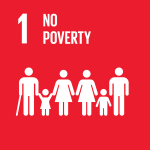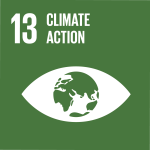Led by the Ministry of Environment, Forest and Climate Change in partnership with the United Nations Development Programme (UNDP) and supported by the Green Climate Fund, the project will build climate-resilient livelihoods for 1.7 million people, offset 3.5 million tonnes of carbon, protect vulnerable ecosystems, and benefit another 10 million people with improved shoreline protections
13 November 2019, New Delhi, India – The Government of India took an important step toward its goals for low-carbon, climate-resilient development today with the kick-off of a US$43 million project to build climate resilience of millions of people living in the coastal states of Andhra Pradesh, Maharashtra and Odisha. The six-year project will work with communities in restoring ecosystems and promoting climate-resilient livelihood options, such as the sustainable farming of mud crabs.
The new project, funded by the Green Climate Fund, will be led by the Ministry of Environment, Forest and Climate Change, with support from UNDP. It further establishes India as a leader on climate action, and marks an essential step for India to reach its goals outlined in the Paris Agreement and 2030 Agenda for Sustainable Development. These global compacts call on every nation to end poverty and hunger by 2030, and to take strong action to ensure no one is left behind in protecting vulnerable people from the extreme impacts of climate change. This initiative will particularly address India’s strategic plan to achieve its nationally determined contributions under the Paris Agreement, which focuses on adaptation efforts in vulnerable communities.
Over 1.7 million people are expected to directly benefit from livelihoods support, with another 10 million indirectly benefitting from improved shoreline protection. The initiative will also focus on providing tangible benefits for vulnerable communities, including women, female-headed households, young people and the elderly, and members of Scheduled Castes and Tribes.
Over 3.5 million tonnes of CO2 will be sequestered through restored ecosystems over the next 30 years.
"India’s coastal areas are quite vulnerable to climate change and in the last 5 years, we’ve seen increased floods and cyclones in these regions. This pace-setting new initiative will help enhance resilience and adaptability, lead to emissions reductions and support sustainable livelihoods. It aligns well with the priorities of the National Action Plan on Climate Change, the State Action Plans, and the nationally determined contributions under the Paris Agreement," said Ravi Shankar Prasad, Additional Secretary, Ministry of Environment, Forest and Climate Change, Government of India. The Government of India will finance an additional US$86.8 million toward the new project to mainstream and accelerate the impacts of the Green Climate Fund grant.
“This initiative will not just build climate resilience among people living on India's coasts, it will also have considerable long-term environmental benefits. By promoting healthier ecosystems, better biodiversity conservation and resilient livelihoods, it is also an example of the kind of integrated approach we need to achieve the Sustainable Development Goals,” said Shoko Noda, UNDP India Resident Representative.
To protect life on land and below water as outlined in the 2030 Agenda, project activities will focus on the restoration and conservation of over 15,000 hectares of mangroves, coral reefs, seagrasses and saltmarshes. Communities, including local youth, will be trained to work with scientists in monitoring ecosystem health and coastal ecology.
“The Green Climate Fund (GCF) welcomes the opportunity to partner with UNDP and the Government of India to support coastal communities against the impacts of sea level rise, cyclones and storm surges,” said Ania Grobicki, Deputy Director for Adaptation in GCF’s Division of Mitigation and Adaptation. “Serving the Paris Agreement, GCF commits to enabling India to realize its national climate action priorities, using nature-based solutions to build resilience and protect the livelihoods of vulnerable households,” she added.
To strengthen climate risk-informed coastal management and infrastructure planning, the innovative project will create an online decision-support tool available via mobile phone for use by government officers, academic institutions, community members and scientists. The project will also build local knowledge of climate change and the associated risks via training and public education programmes.
A range of partners from the public sector, private sector and civil society were consulted in the creation of the project proposal and will be involved throughout its implementation. The project is set to run to the end of 2024. The project brochure is available here.
###
Media Enquiries
Yamini Lohia, Communications Officer, UNDP India, yamini.lohia@undp.org, Ph. +91-11-4653-2365
Photos available here
For more information, please visit the project page on the UNDP Adaptation Portal.
Note to editors
India’s coastline is expected to be among the regions most affected by climate change globally. The Bay of Bengal and the Arabian Sea are both predicted to be subject to extreme climate variability, with the frequency and intensity of cyclones and extreme weather events projected to increase, particularly on the eastern coastline.
Climate change projections predict a 2ºC rise in average annual temperatures across South Asia by the mid-21st century, exceeding 3ºC by the late 21st century. According to a report from the World Bank, an increase in global mean surface temperatures of 2ºC will make India’s monsoon highly unpredictable, while a 4ºC increase would result in an extremely wet monsoon (which currently has a chance of occurring only once in 100 years) occurring every 10 years by the end of the century.
India has about 6,740 km2 of mangroves, including some of the largest mangrove forests in the world. Mangrove cover along India’s coastline has decreased by 50% in some areas, largely because of human pressures, including alteration of flow of freshwater from upstream. Sea-level rise is predicted to result in further reductions.
About UNDP
UNDP partners with all levels of society to help build nations that can withstand crisis, and drive and sustain growth that improves the quality of life for everyone. On the ground in nearly 170 countries and territories, we offer global perspective and local insight to help empower lives and build resilient nations.
In line with the UN Secretary General's reform agenda and the guidance of Member States, UNDP’s Strategic Plan 2018-2021 sets out new ways of working to deliver on UNDP's vision: Helping countries to eradicate extreme poverty, supporting them to quickly modernize key sectors to work better for sustainable development, and enabling them to prevent crisis and recover faster. The Strategic Plan focuses on integrated solutions under six key areas: poverty, governance, resilience, environment, energy, gender equality.
About GCF
The Green Climate Fund (GCF) is the world’s largest fund dedicated to climate finance and created to support the efforts of developing countries to respond to the challenge of climate change. GCF helps developing countries limit or reduce their greenhouse gas (GHG) emissions and adapt to climate change. It seeks to promote a paradigm shift to low-emission and climate-resilient development, taking into account the needs of nations that are particularly vulnerable to climate change impacts.


